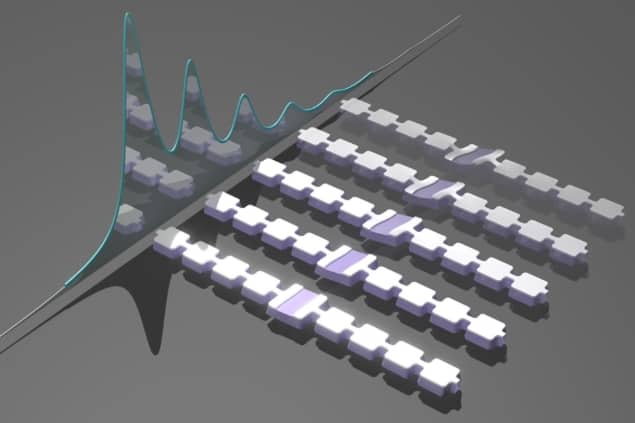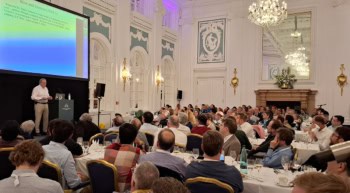
A superconducting qubit can be used to reliably detect the presence of multiple phonons at the same time, US physicists have demonstrated. Patricio Arrangoiz-Arriola and colleagues at Stanford University built their “quantum microphone” using materials that minimized phonon losses, while narrowing the spectra of their qubit’s emissions to reduce uncertainties. The technology could allow for new capabilities in quantum computing, including modems that link together many quantum computers at different locations.
While the quantum properties of photons have been explored and exploited extensively, those of quantized mechanical vibrations, known as phonons, have remained much more difficult to study. Although phonons are important for explaining many properties in solid materials, the technologies required to measure and control them have faced significant challenges because – in contrast to photons – the quantized states of phonons do not have well-defined energies. Instead, they exist as collective excitations at equally spaced energies.
The most successful attempts to detect phonons so far have involved a technique named quantum acoustics, in which an artificial atom is coupled to a vibrating nanostructure. This atom can be in one of two quantum states, depending on whether or not it has absorbed a phonon. In their study, Arrangoiz-Arriola’s team devised a more sophisticated version of this setup – replacing the atom with a superconducting qubit to allow for stronger coupling with the nanostructure. Where the artificial atom would need to entirely absorb a phonon, this coupling allows the qubit to change states simply in the presence of one or more phonons.
To further improve their quantum microphone, Arrangoiz-Arriola and colleagues combined the qubit with a piezoelectric resonator, which produces a large voltage in response to mechanical deformation. This heightens the peaks of the energy spectra emitted by the qubit as it changed states. Shielding the hybrid qubit-resonator platform with a periodic crystal ensures that only the phonons produced by the nanostructure can interact with the qubit, while also minimizing losses of phonons to the surrounding environment.
The physicists then excited phonons through resonant vibrations of the nanostructures, and probed the peak positions of the qubit’s resulting transition spectra – which shifted to different degrees depending on the number of phonons present. They observed energy shifts around five times larger than the linewidths of each peak, revealing the presence of up to three phonons with a high degree of certainty.
In future studies, Arrangoiz-Arriola’s team hope to improve their setup to reveal phonon numbers without changing them, allowing for repeated measurements. Further developments could allow the quantum microphone to provide a basis for quantum modems, potentially creating networks of quantum computers in a variety of locations, and could also inform designs for novel architectures for quantum computers themselves.
The full results are reported in Nature



